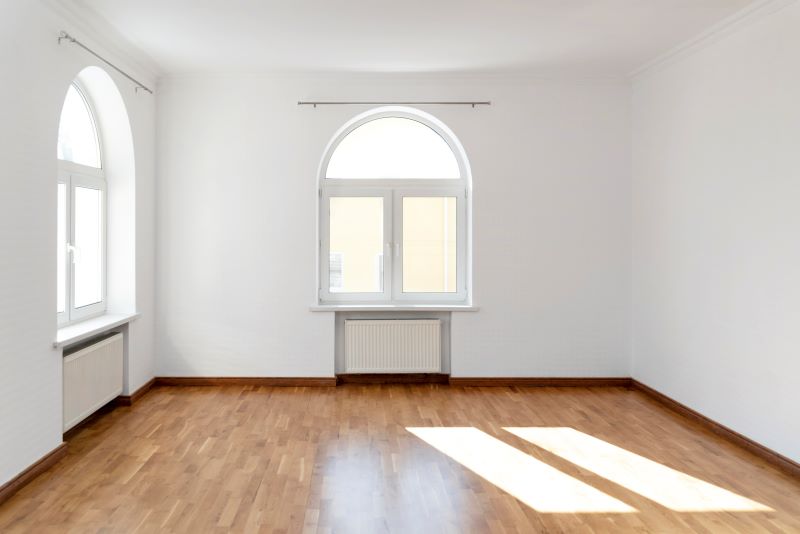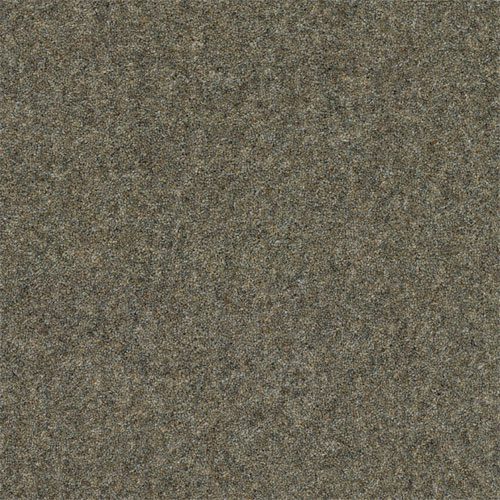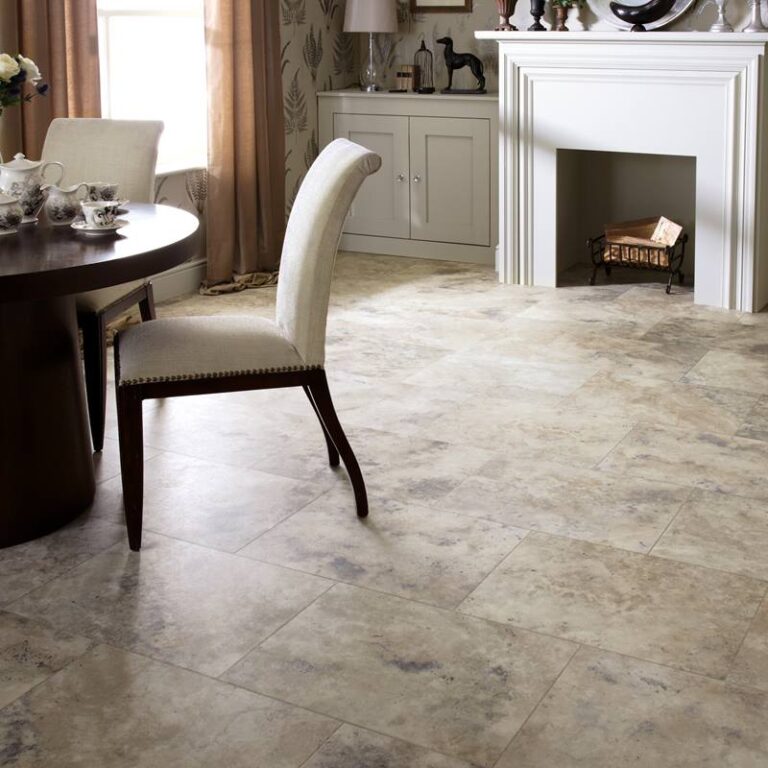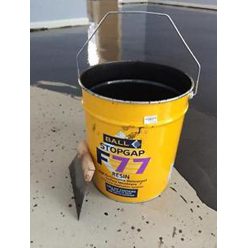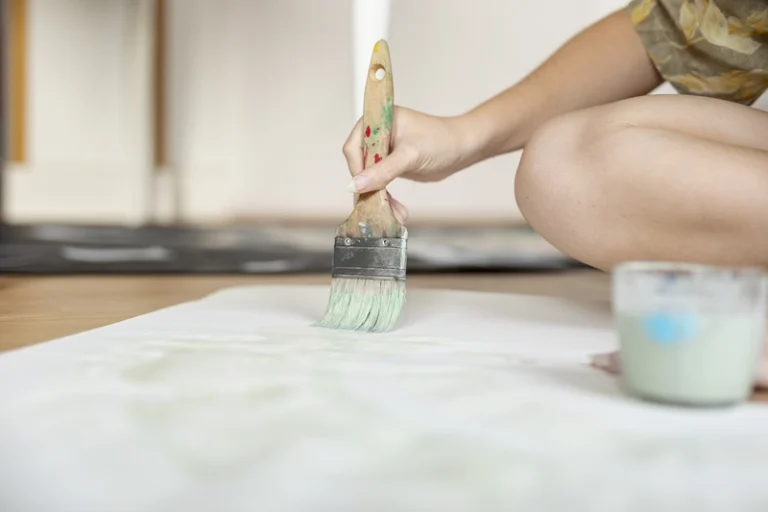Can you use carpet underlay for laminate flooring? In this article, we will explore the concept of carpet underlay and laminate flooring, and whether or not they can be used together. We will discuss the benefits and drawbacks of using carpet underlay for laminate flooring, as well as alternative underlay options to consider.
Find out important factors to consider when choosing underlay for laminate flooring and gain tips on how to properly install it. Stay tuned to learn more about using carpet underlay for other types of flooring as well!
What Is Carpet Underlay?
Carpet underlay is a thin layer of material, usually made from rubber or foam, that is placed underneath carpeting. It serves as a cushioning and insulation layer between the carpet and the subfloor.
A carpet underlay not only enhances the comfort level of your flooring but also plays a significant role in improving energy efficiency within your home. The primary purpose of the underlay is to provide a soft surface for your feet to walk on while also reducing impact noise and preventing heat loss through the floor. Different materials such as sponge rubber, foam, felt, and crumb rubber are commonly used in making carpet underlay, each offering varying levels of durability and cushioning properties.
What Is Laminate Flooring?
Laminate flooring is a synthetic flooring product that consists of multiple layers fused together through a lamination process. It is known for its durability and ease of installation, making it a popular choice for residential and commercial spaces.
One of the key components of laminate flooring is the core layer, which provides stability and moisture resistance. On top of this core layer is the décor layer, which gives the flooring its aesthetic appeal with a variety of designs and patterns mimicking natural materials like wood or stone. The wear layer on top protects the flooring from scratches and stains, enhancing its longevity.
Can You Use Carpet Underlay for Laminate Flooring?
Can you put laminate flooring over carpet underlay? Using carpet underlay for laminate flooring is a common question among homeowners looking to install laminate over existing carpet underlay. While it can be done, there are considerations to keep in mind to ensure the flooring’s longevity and performance.
One of the key factors to consider when using carpet underlay for laminate flooring is the thickness and material of the underlay. The underlay should not be too thick, as this can cause issues with the locking system of the laminate flooring. Opting for a thin foam underlay specifically designed for laminate can help maintain the integrity of the flooring.
Another benefit of using carpet underlay is its ability to provide extra cushioning and noise reduction, making the laminate flooring feel softer underfoot and minimising sound transmission. One drawback to be aware of is moisture retention, as certain carpet underlays can trap moisture and lead to mould or warping of the laminate.
Benefits of Using Carpet Underlay for Laminate Flooring
Laying laminate flooring on carpet underlay can provide added thermal insulation, sound absorption, and cushioning underfoot. This combination can enhance the comfort and energy efficiency of the space.
Thermal insulation is a key benefit of carpet underlay with laminate flooring, as it helps to retain warmth during colder months and reduces heat loss through the floor. The soundproofing properties offer a quieter environment by reducing noise transmission between floors, creating a peaceful atmosphere. The cushioning effect of the underlay adds a layer of comfort, making walking and standing on the laminate floor more comfortable for extended periods.
Drawbacks of Using Carpet Underlay for Laminate Flooring
Can laminate flooring be laid over carpet underlay? However, using carpet underlay for laminate flooring may lead to issues such as reduced stability, increased height, and potential moisture retention, which could affect the longevity and performance of the laminate flooring.
Reduced stability is a critical concern when using carpet underlay with laminate flooring, as it may cause the floor to feel softer and less secure underfoot, leading to potential shifting or movement of the laminate pieces over time. In addition, the increased height resulting from the use of thick carpet underlay can create uneven surfaces, making it difficult to achieve a seamless look.
Moisture retention is a significant drawback of carpet underlay with laminate flooring, as any water or liquid that seeps through the top layer may get trapped in the underlay, potentially causing mould or mildew growth and damaging the flooring.
Alternative Underlay Options for Laminate Flooring
When considering underlay options for laminate flooring, alternatives such as foam, cork, rubber, and felt underlay can offer different benefits in terms of moisture resistance, soundproofing, and durability.
Foam underlay, known for its affordability and cushioning properties, acts as a moisture barrier and reduces sound transmission, making it a popular choice for residential spaces.
Cork underlay, on the other hand, is eco-friendly, antimicrobial, and provides excellent thermal insulation, ideal for those seeking a sustainable option with added health benefits.
Rubber underlay stands out for its exceptional durability, offering superior impact resistance and noise reduction, perfect for high-traffic areas.
Felt underlay, with its soft texture and comfortable feel, excels in sound absorption and prolongs the lifespan of laminate flooring, making it an excellent choice for a cozy home environment.
a. Foam Underlay
Foam underlay is a popular choice for laminate flooring due to its lightweight nature, sound absorption capabilities, and ease of installation. It provides a comfortable feel underfoot and can help level minor subfloor irregularities.
One key advantage of foam underlay is its exceptional soundproofing qualities. It effectively reduces impact noise, such as footsteps and furniture movement, creating a quieter indoor environment. The installation process is hassle-free, as foam underlay often comes in rolls or sheets that can be easily cut to fit the room’s dimensions. This not only saves time but also ensures a seamless finish.
b. Cork Underlay
Cork underlay is a sustainable and eco-friendly option for laminate flooring underlay. It offers excellent thermal insulation, moisture resistance, and natural soundproofing properties.
One of the significant benefits of using cork underlay is its environmentally friendly nature. Cork is a renewable resource that is harvested from the bark of cork oak trees, allowing the trees to regenerate and flourish. This sustainable practice makes cork underlay an excellent choice for those looking to reduce their ecological footprint.
Its thermal insulation capabilities help keep rooms warm in winter and cool in summer, leading to energy savings and increased comfort. The natural soundproofing properties of cork underlay create a quieter and more peaceful indoor environment, minimising noise transmission between floors.
c. Rubber Underlay
Rubber underlay is a durable and resilient choice for laminate flooring underlay. It provides excellent impact resistance, moisture protection, and acoustic insulation, enhancing the overall performance of the laminate floor.
One of the key advantages of using rubber underlay is its ability to absorb impact, helping to prevent damage and reduce wear on the laminate flooring over time. The moisture management properties of rubber underlay help create a barrier against water seepage, which is crucial in areas prone to spills or high humidity.
Rubber underlay contributes to sound insulation by dampening noise, making it an ideal choice for homes or buildings where noise reduction is a priority. Its durability ensures that the laminate flooring stays well-protected and maintains its quality even in high-traffic areas.
d. Felt Underlay
Felt underlay is a cost-effective option for laminate flooring underlay. It provides moderate sound absorption, thermal insulation, and a soft underfoot feel, making it a popular choice for residential installations.
One of the key advantages of using felt underlay with laminate flooring is its affordability without compromising on quality. The material’s ability to dampen sound helps reduce noise levels within the room, offering a quieter and more comfortable living environment. The added thermal insulation provided by the felt underlay contributes to energy efficiency, keeping indoor temperatures stable and reducing heating costs. This underlay type enhances the longevity and performance of laminate flooring, making it a practical and beneficial investment for homeowners.
Factors to Consider When Choosing Underlay for Laminate Flooring
So, do you need underlay for carpet on laminate flooring? However, several factors should be considered when selecting underlay for laminate flooring, including thickness, moisture resistance, soundproofing capabilities, and durability. Each factor plays a crucial role in determining the performance and longevity of the laminate floor.
Thickness is essential as it can impact the comfort and wear of the floor, providing cushioning and support. Moisture resistance is crucial to prevent damage from spills or humidity, especially in areas like kitchens or bathrooms. Good soundproofing properties help reduce noise transfer between floors, creating a quieter and more peaceful environment.
Durability ensures that the laminate floor can withstand daily wear and tear, maintaining its appearance over time. It is important to choose an underlay that meets the requirements of the specific location and installation method to enhance the overall performance and longevity of the laminate floor.
a. Thickness
The thickness of the underlay can impact the level of comfort, insulation, and soundproofing provided by the laminate flooring. Optimal thickness selection is essential to ensure proper support and performance.
Choosing the right thickness level of underlay for your laminate flooring is crucial for several reasons. First and foremost, a thicker underlay adds more cushioning underfoot, enhancing the comfort level of your floors. This additional padding can make walking on the laminate surface a more pleasant experience, especially in high-traffic areas.
Furthermore, a thicker underlay also plays a significant role in insulation. It helps maintain the temperature of the room by providing a barrier between the cold subfloor and the flooring, resulting in a more energy-efficient environment.
Regarding soundproofing, the underlay thickness can make a noticeable difference in reducing noise transmission between floors. Thicker underlays absorb more sound vibrations, effectively minimising the impact of footsteps and other noises, creating a quieter living space overall.
b. Moisture Resistance
Moisture resistance in underlay is crucial for protecting laminate flooring from potential water damage, mould growth, and subfloor issues. Choosing an underlay with proper moisture resistance properties can enhance the longevity of the laminate floor.
When moisture seeps through the flooring, it can lead to warping, buckling, or discolouration of the laminate material. Moisture resistance acts as a barrier, blocking any water infiltration and safeguarding the integrity of the floor.
Excessive moisture can create an ideal environment for mould and mildew to thrive, posing health risks and requiring costly remediation. Hence, underlays with superior moisture resistance not only protect the aesthetic appeal of the flooring but also maintain a healthier indoor environment.
c. Soundproofing
Soundproofing underlay can minimise noise transmission between storeys, creating a quieter and more comfortable indoor environment. Selecting underlay with effective soundproofing properties can reduce impact noise and airborne sound in the space.
By incorporating soundproofing underlay beneath laminate flooring, you enhance the overall acoustic performance of the room. This results in a significant reduction in footstep noise, echoes, and disturbances caused by airborne sounds. The soundproofing capabilities of the underlay also contribute to maintaining a peaceful and serene indoor environment, ensuring that you can enjoy moments of tranquillity without being disrupted by external noises.
Durability
The durability of underlay directly affects the long-term performance and stability of laminate flooring.
It is essential to appreciate the role of underlay in providing a robust foundation for the laminate floor, which directly impacts its resilience against wear and tear.
Choosing a high-quality underlay can effectively reduce the noise levels and enhance the thermal insulation properties of the flooring, creating a more comfortable living environment. A durable underlay minimises the chances of moisture penetration, preventing potential damage to the laminate planks and ensuring a longer lifespan for the entire flooring system.
How to Install Underlay for Laminate Flooring Properly
Proper installation of underlay for laminate flooring is crucial for ensuring a stable and long-lasting floor. The installation process involves steps like preparing the subfloor, laying the underlay correctly, and addressing any potential issues before installing the laminate planks.
Before you start the installation, it’s essential to evaluate the condition of the subfloor thoroughly. Clear the area of any debris or dust, ensuring a smooth and level surface to prevent future damage to your flooring. Once the subfloor is prepped, begin placing the underlay starting from one corner of the room, ensuring a snug fit without overlapping the underlay sheets. To troubleshoot common problems, like noise or bouncing, make sure the underlay is properly secured and any gaps are sealed with appropriate materials.
Can You Use Carpet Underlay for Other Types of Flooring?
While carpet underlay is primarily designed for use with carpeting and laminate flooring, it can also be used with other types of flooring such as hardwood, vinyl, and tile. Understanding the compatibility and benefits of using carpet underlay with different flooring materials is essential for making an informed choice.
Hardwood flooring, known for its elegance and durability, can greatly benefit from the use of carpet underlay. The underlay provides an added layer of cushioning, reducing noise transmission and enhancing comfort underfoot.
Regarding vinyl flooring, carpet underlay can help improve thermal insulation and provide moisture protection, prolonging the lifespan of the vinyl. It also offers a more cushioned feel compared to direct installation on the subfloor.
For tile flooring, carpet underlay can help mitigate cracks and unevenness in the subfloor, leading to a smoother and more uniform surface for tile installation. It can also contribute to sound insulation, making the space quieter.
1. Hardwood Flooring
Using carpet underlay with hardwood flooring can provide added cushioning, sound absorption, and thermal insulation. It is crucial to ensure that the underlay material is compatible with hardwood to prevent any potential damage or issues.
One of the key benefits of incorporating carpet underlay with hardwood flooring is the enhanced comfort it offers underfoot. The cushioning effect provided by the underlay creates a softer walking surface, reducing strain on joints and feet. The soundproofing properties of the underlay help minimise noise transfer between floors, making it ideal for areas needing quieter environments.
Another aspect to consider when selecting carpet underlay for hardwood floors is its thermal insulation capabilities. The underlay can act as a barrier, helping to retain heat in colder months, and contributing to energy efficiency.
Ensuring that the underlay material is suitable for hardwood is essential to avoid any adverse effects. Some underlay materials may contain chemicals or adhesives that could react negatively with hardwood, leading to discolouration or damage. Checking the manufacturer’s guidelines for compatibility is vital to maintaining the integrity of the hardwood flooring.
2. Vinyl Flooring
When used with vinyl flooring, carpet underlay can offer additional comfort, noise reduction, and support. It is essential to select underlay specifically designed for vinyl to ensure optimal performance and longevity of the flooring.
One of the significant advantages of using carpet underlay with vinyl flooring is the enhanced comfort it provides underfoot. The underlay acts as a cushioning layer, making the floor softer to walk on, especially in areas where people tend to stand for longer periods.
Along with comfort, another key benefit of incorporating carpet underlay is noise reduction. By absorbing impact and sound, the underlay helps minimise the noise generated from foot traffic and other activities on the floor, creating a quieter and more peaceful environment.
It’s crucial to choose the right type of underlay for vinyl flooring to ensure proper support and compatibility. Opting for underlay specifically designed for use with vinyl helps maintain the integrity of the flooring, prevents premature wear and tear, and enhances its overall performance.
3. Tile Flooring
Using carpet underlay with tile flooring can provide a softer feel underfoot, impact resistance, and thermal insulation. It is essential to ensure that the underlay material is compatible with tile adhesive and grout for a successful installation.
Carpet underlay offers excellent benefits beyond comfort, including noise reduction, moisture protection, and extending the lifespan of the tiles. The underlay acts as a cushioning layer that absorbs impact, making it ideal for high-traffic areas. It helps in maintaining the temperature of the room by providing thermal insulation, which can lead to energy savings. When selecting underlay, consider its thickness, density, and material composition to ensure it complements the specific requirements of the tile flooring.
Looking to choose underlay for your flooring? Trust TEKA Flooring for this. We provide flooring accessories, including underlay from Ball & Young, a distinguished underlay company that has been providing exceptional flooring solutions with a commitment to quality and innovation.
Read Also:







